The strangest planes in the world (22 photos)
 Bashny.Net
Bashny.Net
It's amazing what can be assembled aircraft, putting enough effort, pure creativity and invested a lot of money into the project. Overview unusual designs of aircraft, helicopters and landers, from flying saucers to "Caspian Monster". Expensive, experimental and often never leave the ground.
Wingless. NASA Project "M2-F1» earned the nickname "the flying bathtub." Its main purpose, developers have seen in use as a capsule landing astronauts. The first flight of the wingless aircraft on 16 August 1963, and exactly three years later on the same day, was the last:
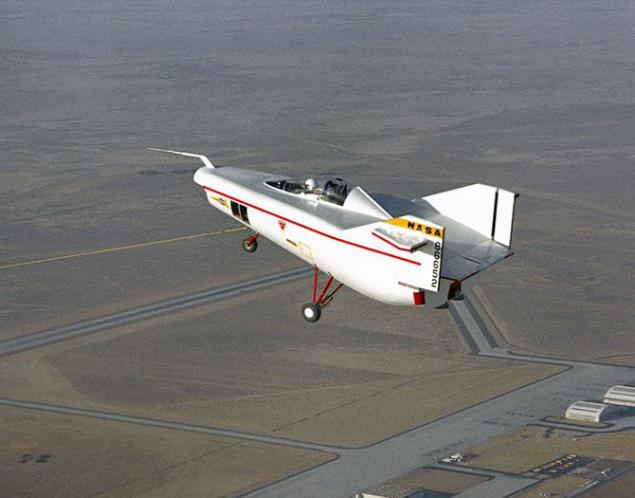
remote controlled. Since mid-1979 to January 1983 at the airbase NASA conducted tests of two remotely piloted vehicles HiMAT. Each plane was about half the size of the size of the F-16, but had almost twice superior maneuverability. At transonic speed of sound at an altitude of 7500 m machine to make a U-turn with overdrive 8 g, for comparison, the F-16 fighter at the same altitudes withstand overload only 4, 5 g. Upon completion of studies, both machines have been preserved:
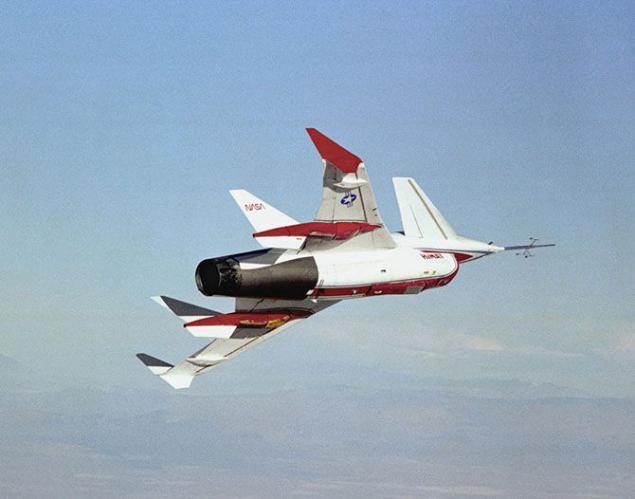
Tailless. The prototype aircraft McDonell Douglas X-36 was built with one purpose: to test the ability of flying tailless aircraft. It was built in 1997 and planned by the developers can be controlled remotely from the ground:

Lopsided. Ames AD-1 (Eymes AD-1) - a pilot and the world's first aircraft with an oblique wing Ames Research Center, and Burt Rutan. It was built in 1979 and made its first flight on December 29 the same year. Tests were carried out before 1982. During this time, the AD-1 mastered the 17 pilots. After closing the program put the plane into a museum of the city of San Carlos, where he remains to this day:
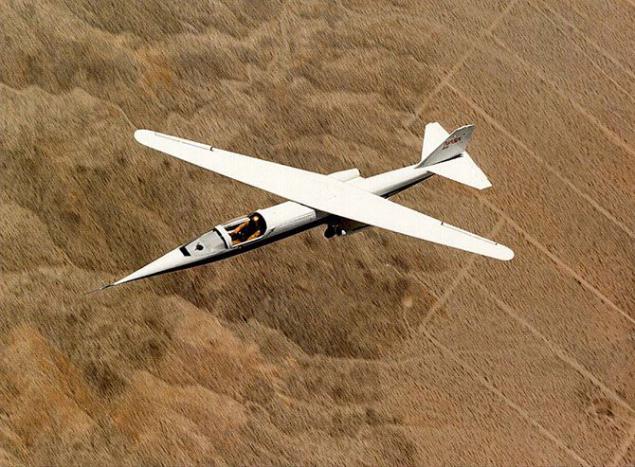
With rotating wings. Boeing Vertol VZ-2 - the world's first flying machine that uses the concept of a rotary wing, vertical / short takeoff and landing. The first flight with vertical takeoff and hovering in the air was made VZ-2 summer of 1957. After a series of successful tests VZ-2 was submitted to the Research Center of NASA in the early 60's:

The biggest helicopter. In connection with the needs of the Soviet economy and the armed forces in the Design Bureau. Mil in 1959 began studies of superheavy helicopter. August 6, 1969 the helicopter Mi-12 was an absolute world record lift cargo - 40 tons to a height of 2250 meters, not surpassed until now; all helicopter V-12 was established 8 World Records. In 1971, a helicopter-12 was successfully demonstrated at the 29th International Air Show in Paris, where he was recognized as the "star" of the cabin, and then in Copenhagen and Berlin. B-12 - the most difficult and lifting helicopter ever built in the world:

Flying saucer. VZ-9-AV Avrocar - aircraft vertical takeoff and landing of the development of the Canadian company Avro Aircraft Ltd. Development of the aircraft began in 1952 in Canada. November 12, 1959 made the first flight. In 1961, the project was canceled, officially announced in connection with the impossibility of "plates" off the ground more than 1, 5 meters. There were built two devices "avrocar»:
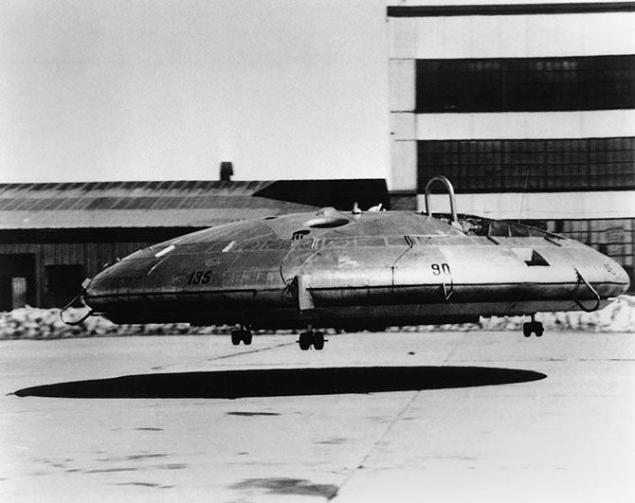
Strange-looking. Fighter in the form of a flying wing Northrop XP-79B, equipped with two jet engines, was built in 1945 by the American firm Northrop. It was assumed that he would swoop down on the enemy bombers and break them, chopping off the tail. September 12, 1945 the aircraft made only one flight that ended in disaster after 15 minutes of flight:

The plane-spacecraft. Boeing X-48 (Boeing X-48) - US experimental unmanned aircraft, jointly established by Boeing and agency NASA. The machine uses one of the species of the flying wing. July 20, 2007, he first rose to a height of 2 300 meters and landed after 31 minutes flight. X-48B was the best invention 2007 according to the Times.
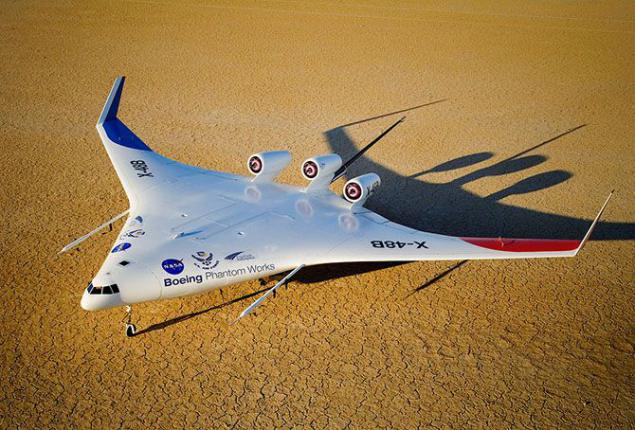
Futuristic. Another project of NASA - NASA Hyper III - airplane, created in 1969:
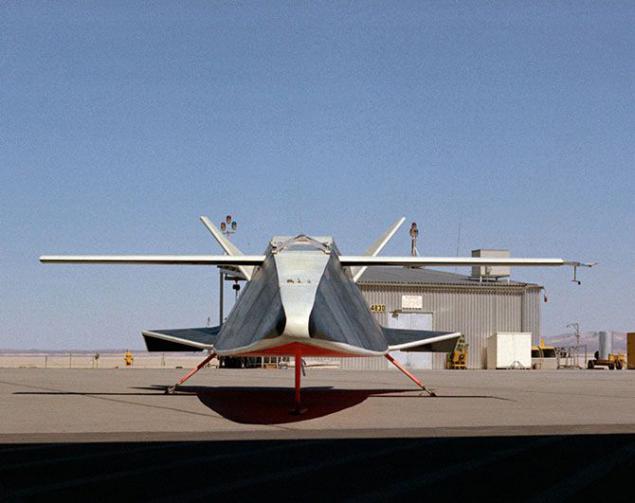
Flying Pancake. Experimental aircraft Vought V-173. In the 1940s, American engineer Charles Zimmerman has created a unique aircraft aerodynamic configuration, which still continues to surprise not only for its unusual appearance, but the flight characteristics. For its unique appearance, he received numerous nicknames, among them the "Flying Pancake". He became one of the first devices vertical / short takeoff and landing:
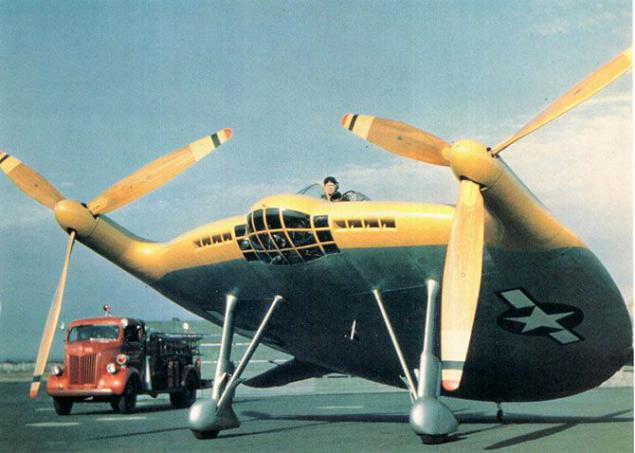
Descended from the heavens. HL-10 - one of five aircrafts Flight Research Center, NASA, used to study and test the feasibility of safe maneuvering and landing on the unit with low air quality, after his return from space:

Reverse sweep. Su-47 "Berkut" - Russian project based fighter developed in the OKB. Sukhoi. Fighter Wing has swept in airframe widely used composite materials. In 1997 he built the first flying of the Su-47, now it is experimental:

Striped. Grumman X-29 - prototype aircraft with forward-swept wing, the development corporation in 1984 Grumman Aerospace (now - Northrop Grumman). There were built two copies commissioned by the Agency for Defense Advanced Research Projects USA:
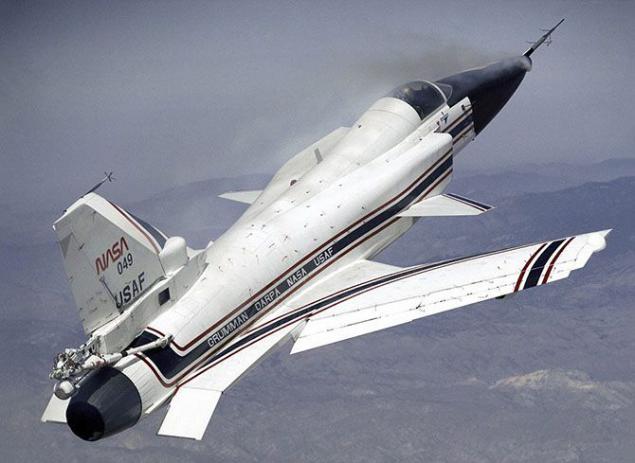
Vertically taking off. LTV XC-142 - American experimental transport aircraft vertical takeoff and landing with a rotary wing. It made its first flight on Sept. 29, 1964. Built five aircraft. The program is discontinued in 1970. The only surviving copy of the aircraft is in the Museum of the US Air Force:

The Caspian Monster. "KM" (ship-model), also known abroad as the "Caspian Sea Monster" - experimental WIG developed in the design office R. Alekseev. The winged had a wingspan of 37, 6 m, length 92 m, maximum takeoff weight of 544 tons. Before the advent of aircraft An-225 "Mriya" it was the heaviest aircraft in the world. Tests "Caspian Monster" took place in the Caspian Sea for 15 years until 1980. In 1980, due to an error of piloting crashed KM, there were no casualties. Then recovery operations or construction of a new instance of the CM is not carried out:

Air kit. Super Guppy - transport aircraft for the transport of oversized cargo. Developer - Aero Spacelines. Released in the amount of five copies in two versions. First flight - in August 1965. The only flying "air kit" belongs to NASA and operated to deliver large items to the ISS:

Gray mullet. Douglas X-3 Stiletto Stiletto - American experimental monoplane company "Douglas". In October 1952, the first flight of the plane W Douglas X-:
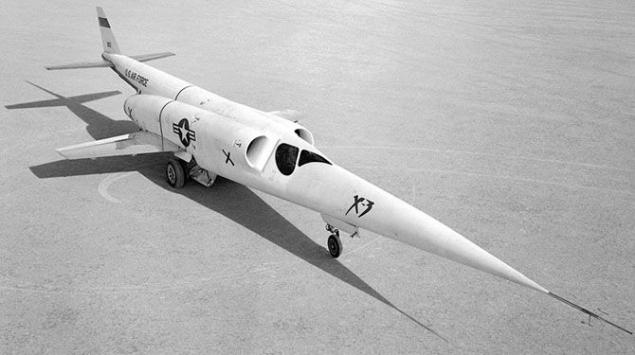
For flights to the moon. This descent module, built in 1963, was part of the "Apollo", whose goal was the first manned landing on the moon. The module is equipped with a jet engine:

Rotorcraft. Sikorsky S-72 - an experimental helicopter. The first flight of S-72 made 12 October 1976. The flight of the upgraded S-72 was held on 2 December 1987, but after three operations following funding has been discontinued:

Aircraft missile. Ryan X-13A-RY Vertijet - experimental jet vertical takeoff and landing, created in the United States in the 1950s. Developer - Ryan. Customer-United States Air Force. There were built two such aircraft:
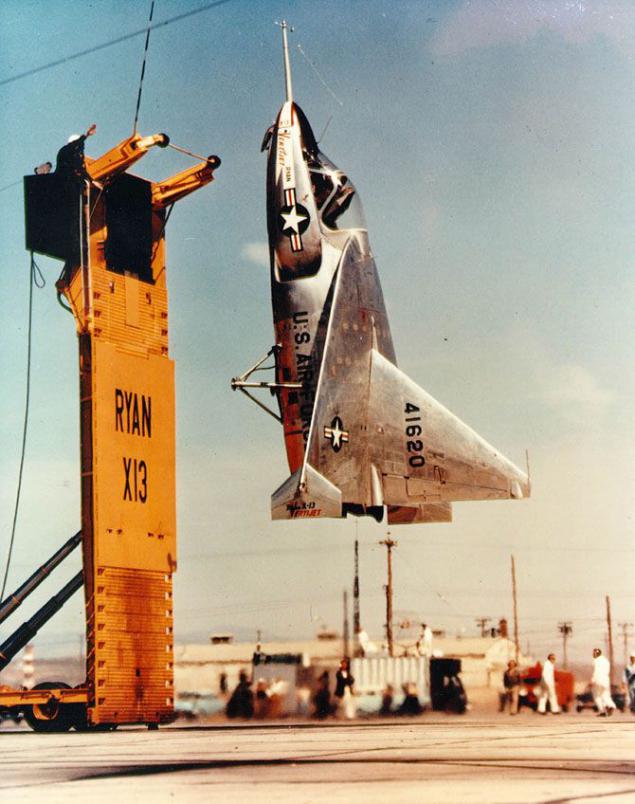
The lunar module. Another descent module vertical takeoff and landing, built in 1964, was part of the "Apollo", whose goal was the first manned landing on the moon.
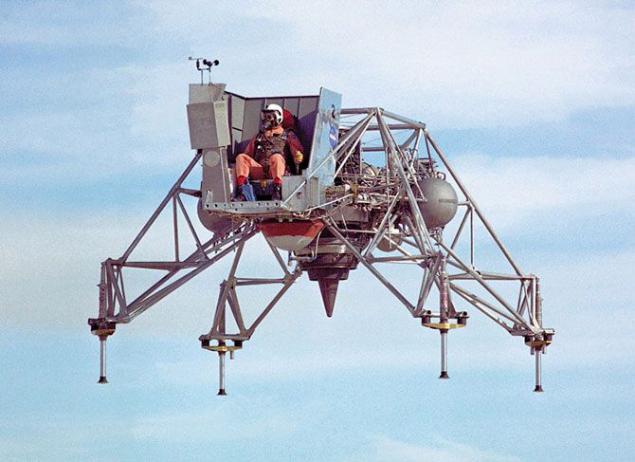
Wingless. NASA Project "M2-F1» earned the nickname "the flying bathtub." Its main purpose, developers have seen in use as a capsule landing astronauts. The first flight of the wingless aircraft on 16 August 1963, and exactly three years later on the same day, was the last:

remote controlled. Since mid-1979 to January 1983 at the airbase NASA conducted tests of two remotely piloted vehicles HiMAT. Each plane was about half the size of the size of the F-16, but had almost twice superior maneuverability. At transonic speed of sound at an altitude of 7500 m machine to make a U-turn with overdrive 8 g, for comparison, the F-16 fighter at the same altitudes withstand overload only 4, 5 g. Upon completion of studies, both machines have been preserved:

Tailless. The prototype aircraft McDonell Douglas X-36 was built with one purpose: to test the ability of flying tailless aircraft. It was built in 1997 and planned by the developers can be controlled remotely from the ground:

Lopsided. Ames AD-1 (Eymes AD-1) - a pilot and the world's first aircraft with an oblique wing Ames Research Center, and Burt Rutan. It was built in 1979 and made its first flight on December 29 the same year. Tests were carried out before 1982. During this time, the AD-1 mastered the 17 pilots. After closing the program put the plane into a museum of the city of San Carlos, where he remains to this day:

With rotating wings. Boeing Vertol VZ-2 - the world's first flying machine that uses the concept of a rotary wing, vertical / short takeoff and landing. The first flight with vertical takeoff and hovering in the air was made VZ-2 summer of 1957. After a series of successful tests VZ-2 was submitted to the Research Center of NASA in the early 60's:

The biggest helicopter. In connection with the needs of the Soviet economy and the armed forces in the Design Bureau. Mil in 1959 began studies of superheavy helicopter. August 6, 1969 the helicopter Mi-12 was an absolute world record lift cargo - 40 tons to a height of 2250 meters, not surpassed until now; all helicopter V-12 was established 8 World Records. In 1971, a helicopter-12 was successfully demonstrated at the 29th International Air Show in Paris, where he was recognized as the "star" of the cabin, and then in Copenhagen and Berlin. B-12 - the most difficult and lifting helicopter ever built in the world:

Flying saucer. VZ-9-AV Avrocar - aircraft vertical takeoff and landing of the development of the Canadian company Avro Aircraft Ltd. Development of the aircraft began in 1952 in Canada. November 12, 1959 made the first flight. In 1961, the project was canceled, officially announced in connection with the impossibility of "plates" off the ground more than 1, 5 meters. There were built two devices "avrocar»:

Strange-looking. Fighter in the form of a flying wing Northrop XP-79B, equipped with two jet engines, was built in 1945 by the American firm Northrop. It was assumed that he would swoop down on the enemy bombers and break them, chopping off the tail. September 12, 1945 the aircraft made only one flight that ended in disaster after 15 minutes of flight:

The plane-spacecraft. Boeing X-48 (Boeing X-48) - US experimental unmanned aircraft, jointly established by Boeing and agency NASA. The machine uses one of the species of the flying wing. July 20, 2007, he first rose to a height of 2 300 meters and landed after 31 minutes flight. X-48B was the best invention 2007 according to the Times.

Futuristic. Another project of NASA - NASA Hyper III - airplane, created in 1969:

Flying Pancake. Experimental aircraft Vought V-173. In the 1940s, American engineer Charles Zimmerman has created a unique aircraft aerodynamic configuration, which still continues to surprise not only for its unusual appearance, but the flight characteristics. For its unique appearance, he received numerous nicknames, among them the "Flying Pancake". He became one of the first devices vertical / short takeoff and landing:

Descended from the heavens. HL-10 - one of five aircrafts Flight Research Center, NASA, used to study and test the feasibility of safe maneuvering and landing on the unit with low air quality, after his return from space:

Reverse sweep. Su-47 "Berkut" - Russian project based fighter developed in the OKB. Sukhoi. Fighter Wing has swept in airframe widely used composite materials. In 1997 he built the first flying of the Su-47, now it is experimental:

Striped. Grumman X-29 - prototype aircraft with forward-swept wing, the development corporation in 1984 Grumman Aerospace (now - Northrop Grumman). There were built two copies commissioned by the Agency for Defense Advanced Research Projects USA:

Vertically taking off. LTV XC-142 - American experimental transport aircraft vertical takeoff and landing with a rotary wing. It made its first flight on Sept. 29, 1964. Built five aircraft. The program is discontinued in 1970. The only surviving copy of the aircraft is in the Museum of the US Air Force:

The Caspian Monster. "KM" (ship-model), also known abroad as the "Caspian Sea Monster" - experimental WIG developed in the design office R. Alekseev. The winged had a wingspan of 37, 6 m, length 92 m, maximum takeoff weight of 544 tons. Before the advent of aircraft An-225 "Mriya" it was the heaviest aircraft in the world. Tests "Caspian Monster" took place in the Caspian Sea for 15 years until 1980. In 1980, due to an error of piloting crashed KM, there were no casualties. Then recovery operations or construction of a new instance of the CM is not carried out:

Air kit. Super Guppy - transport aircraft for the transport of oversized cargo. Developer - Aero Spacelines. Released in the amount of five copies in two versions. First flight - in August 1965. The only flying "air kit" belongs to NASA and operated to deliver large items to the ISS:

Gray mullet. Douglas X-3 Stiletto Stiletto - American experimental monoplane company "Douglas". In October 1952, the first flight of the plane W Douglas X-:

For flights to the moon. This descent module, built in 1963, was part of the "Apollo", whose goal was the first manned landing on the moon. The module is equipped with a jet engine:

Rotorcraft. Sikorsky S-72 - an experimental helicopter. The first flight of S-72 made 12 October 1976. The flight of the upgraded S-72 was held on 2 December 1987, but after three operations following funding has been discontinued:

Aircraft missile. Ryan X-13A-RY Vertijet - experimental jet vertical takeoff and landing, created in the United States in the 1950s. Developer - Ryan. Customer-United States Air Force. There were built two such aircraft:

The lunar module. Another descent module vertical takeoff and landing, built in 1964, was part of the "Apollo", whose goal was the first manned landing on the moon.

Tags
See also
Graphene aerogel - lightest material in the world
The three most strange taxes in the world
The biggest bonfire in the world
The most dangerous bridge in the world
10-ka of the strangest places in the world
Deep-sea manned submersibles MIR (9 photos)
The smallest girl in the world (7 photos)
Halden - most humane prison in the world (14 photos)
7 of the strangest natural phenomena
The largest swamp in the world

















